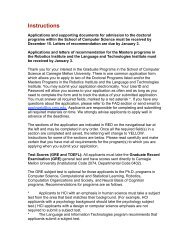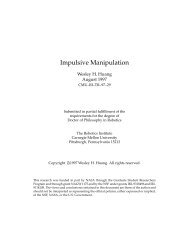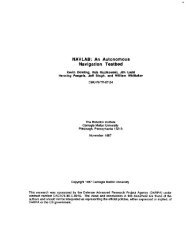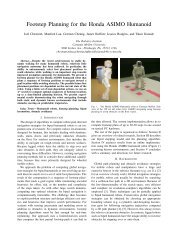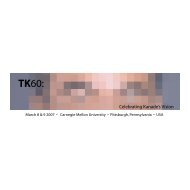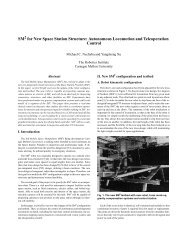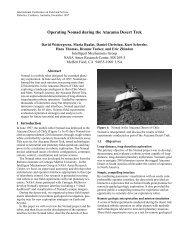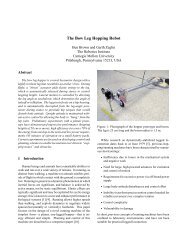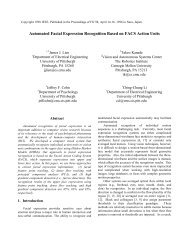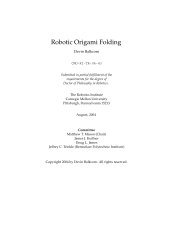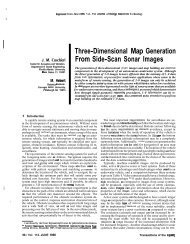A System for Automated Fixture Planning with Modular Fixtures
A System for Automated Fixture Planning with Modular Fixtures
A System for Automated Fixture Planning with Modular Fixtures
You also want an ePaper? Increase the reach of your titles
YUMPU automatically turns print PDFs into web optimized ePapers that Google loves.
33.1. Application of Screw Theory<br />
Screw theory can be applied to check part rotation due to active hture components after the part is<br />
located and supported by passive fixture components. Here, we have only considered fixture plans <strong>with</strong><br />
overhead clamps and future plans <strong>with</strong> a vise. While fixture plans <strong>with</strong> overhead clamps or a vise<br />
kinematidy allow translation onto the plane X-Y and romtion about the Z axis. these motions are<br />
resuained by friction berween fixulre components and the part (Figure 3-4). Also, the configuration of<br />
fixture components in fixture plans <strong>with</strong> overhead clamps ot a vise always resuains uanslation along the Z<br />
axis. Thus, it is only necess;ny to check whetha a clamp 01 a vise can rotate the part about the X OT Y axis.<br />
When a part is subject to a set of external <strong>for</strong>em (meaches), a pmsible motion can be represented by a<br />
mew t=(t,.r2,r3;t4.t5.t~ where tl. $* and $ represents rotational motion about the X. Y and Z axis<br />
respectively and h. 4, and represents tmslationaJ motion along the X, Y and Z axis respectively. For an<br />
active fixture component not to rotate tbe part, components t, and 5 in t should have only trivial solutions,<br />
since non-trivial values in any component of a twist represeot the exiSrence of motion caused by a set of<br />
wrenches.<br />
A fix- plan <strong>with</strong> clprmps ~ A<br />
X<br />
t<br />
thm. plan wi tha vise<br />
Figure 3-4: Unreslrained motions in tixm plans <strong>with</strong> overhead ciamps or a vise<br />
A fixture plan <strong>with</strong> overhead clamps<br />
Wbenapartissu~byabsseplateorasubplate,eachvertwofreference~touchinga~<br />
plaeorasubplate can be described by a wreoch (see Figure3-5). When apart is qprted by a few<br />
suppas, each support can be described by a wrench. In addition, a candidate clamp loation can also be<br />
described by a wrench.<br />
From resuits of mew theory, geomemic reasoning can be used to detect part rotanon due to clamping.<br />
The part will rotate if the projection of the clamp location to tbe base plate lies outside of a convex polygon




